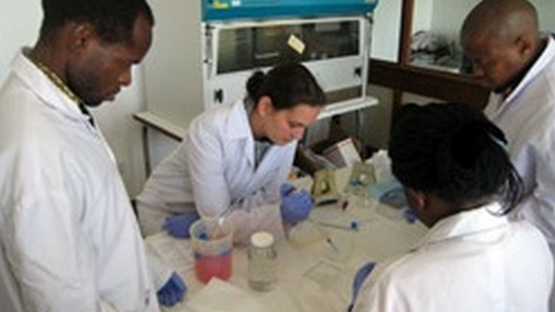The APU was responsible for the standardization of techniques, reagents and protocols, for the development of quality assurance and software support systems and for the provision of assay kits to all Joint FAO/IAEA Centre projects. It is important to note, the UPU was not producing reagents, but obtaining them from various commercial, government and university laboratories. The most important objective of the UPU was to produce quality diagnostic ‘kits’ supported by a quality support system with technical support from APH staff. The ultimate measure of the success was the production of reliable research and diagnostic data by counterpart laboratories participating in the projects conducted by the APH in developing countries.
The APU received three important endorsements in 1992 and 1993. The OIE designated the APU as “OIE Collaborating Centre for ELISA and Molecular Techniques in Animal Disease Diagnosis”, the IAEA and the FAO recognized the APU as the “FAO/IAEA Central Laboratory for ELISA and Molecular Techniques in the Animal Disease Diagnosis”, and WHO designated the APU as its “Collaborating Centre for ELISA and Molecular Techniques in Zoonoses Diagnosis”. These designations underscored the commitment of the Unit and its staff to the international development, standardization and validation of laboratory techniques for infectious disease diagnoses.
By 2000, the RIA assay work was phased out and the components of the various diagnostic kits were transferred to MS. The APH, however, continued to provide quality assured reference technical and practical support especially through the IAEA TCP programme.







